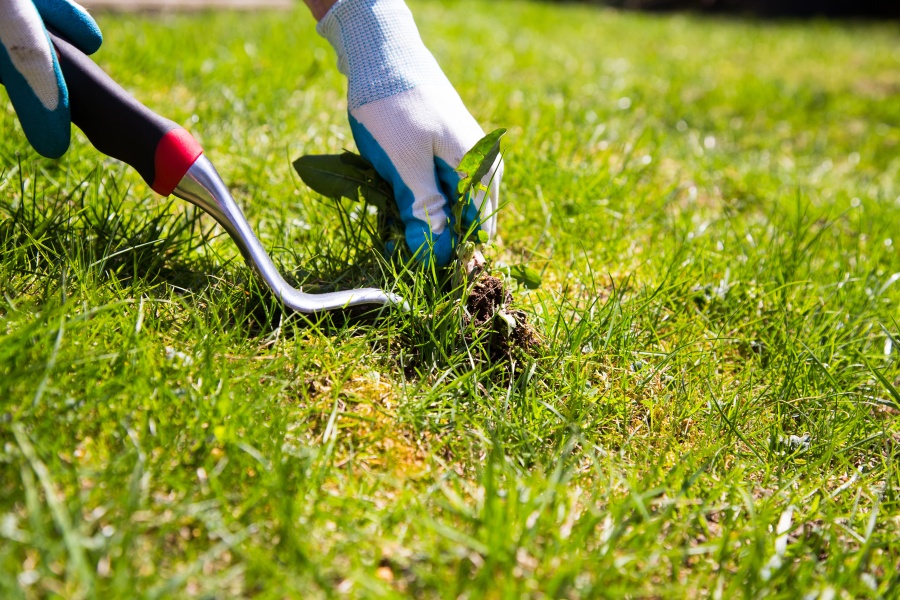Seasoned gardeners are accustomed to dealing with those pesky weeds. Unmerciful and relentless, they persistently try to make an appearance. But not every homeowner is a gardener, and not everyone is prepared to handle them. Some may consider them harmless. But when they start appearing in your sidewalks, in your children’s playground, or your pet’s roaming areas, they might become bothersome. How can you manage your weeds when you don’t have a green thumb? Here’s some tips.
When it comes to weed control, there are as many options as there are types of weeds. First, it’s important to know what your culprit might be. There are three main classifications of weeds: Broadleaf, Grassy, and Grass-like. Here in the Pacific Northwest, broadleaf is likely to appear frequently. These include dandelions, false dandelions, and even some varieties of clovers and ivies. While it would be nearly impossible to list every variety of weed we have here in the Northwest, a good rule to follow is this: If a plant showed up without help, somewhere it isn’t wanted or suppose to be, treat it as a weed.
But how do you control these unwelcome guests? One of the most effective strategies for discouraging them from popping up is to promote growth of the plants you want. A lawn that is maintained, on soil that is healthy, will be a more difficult target for weeds. On the contrary, a lawn that has been let go may turn into a haven for weeds. A lawn that is dehydrated, has not been properly fertilized, has insect damage, or excessive traffic that has compacted the soil, can become a compromised area.
In addition to keeping your lawn healthy, there are many herbicides that you can use for an extra line of defense. If you go to your local home and garden store to pick some up, however, you may find there are many to choose from! Herbicides come in many varieties, and are intended to treat certain types of weed problems.
The first important thing to look for is whether your herbicide is selective or nonselective. Nonselective herbicides must be used with caution, as they are designed to kill all plants in their path. Whereas selective herbicides will only kill certain plants. If you are treating your lawn, make sure you use a selective herbicide so that you will not kill your grass also! If you are treating a sidewalk where plants like to grow between the cracks, a nonselective herbicide might be just the key, as you don’t want anything coming through the concrete!
The other important options you have are pre-emergent and post-emergent herbicides. Pre-emergent herbicides establish a barrier that will leave existing plants unharmed, but prevents weeds from growing. This will generally last six to eight weeks, and therefore may need to be applied throughout the year. Pre-emergent herbicides are a great option for protecting an already healthy lawn! Post-emergent herbicides come to the rescue when damage has already been done. They are designed to attack weeds that have already begun to grow, but before they have started seeding. This works to kill the weeds without letting them reproduce, making it a good option to handle a lawn that has already been invaded.
When it comes to weed control, the simple rules to follow are: Keep a healthy landscape, and treat it when needed. A good landscaper can prepare your soil for an environment that will encourage weeds to move next door. If your yard has been under fire for a long time, it might be time to call in a professional landscaper to give it a facelift! Not only will it be healthier, but it will look better, too. At Responsible Contractors, we aim to bring you the best in each industry. To find a landscaper, or a contractor for any other home issues you may have, visit us online at www.responsiblecontractors.com!

No comments:
Post a Comment